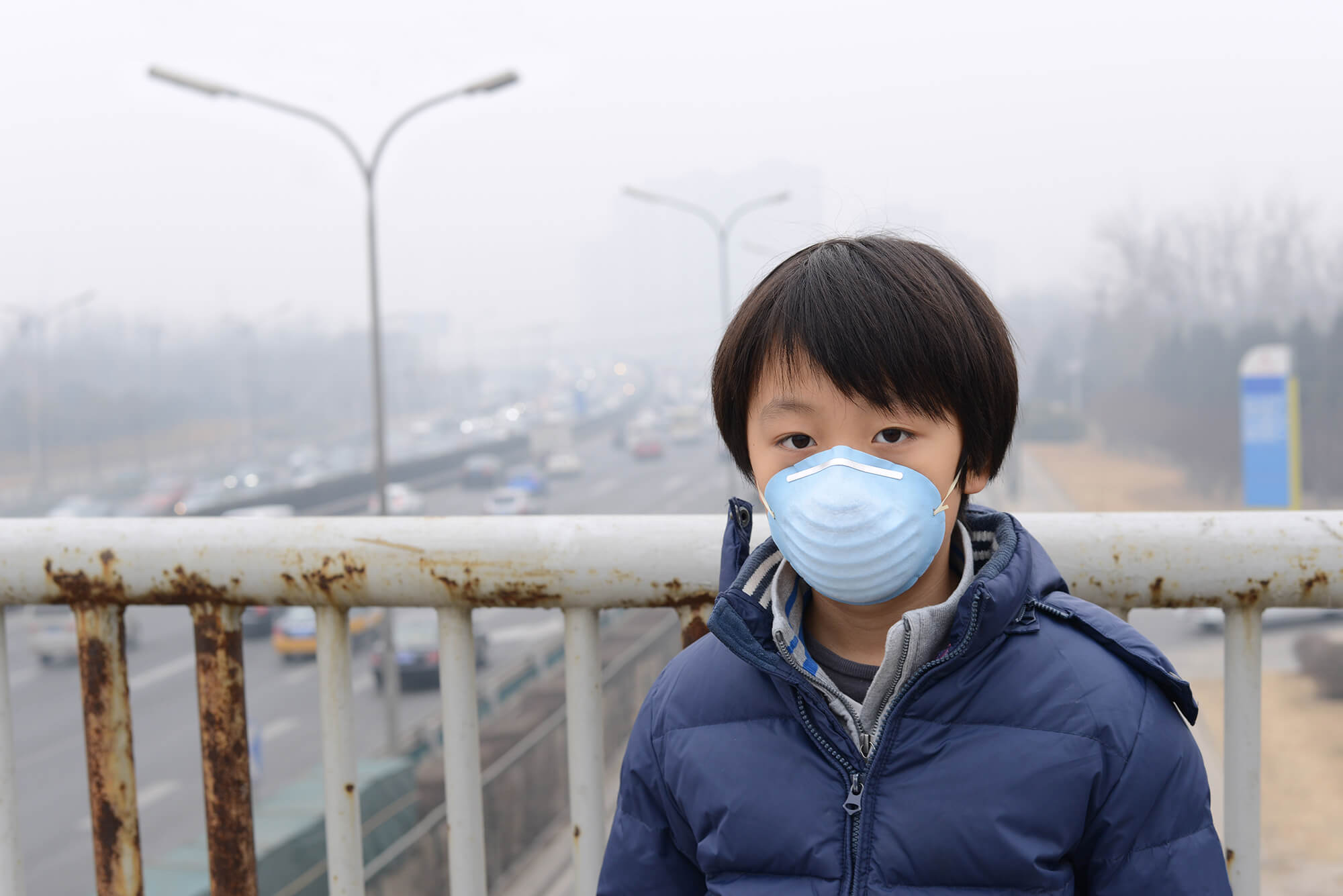
Carbon dioxide as an outdoor air quality monitor?
The term “air quality” includes most aspects concerning health and the comfort of ambient air. When it comes to outdoor air, it is usually unhealthy substances (e.g. particles, nitrogen dioxide, hydrocarbons, carbon monoxide, or ozone) that are considered. Most of these originate from combustion sources that also generate large amounts of carbon dioxide.

Not only is the local air quality dependent on temporary local emissions, but also on current ventilation, i.e. meteorological conditions. In conditions with little air exchange, such as low wind, low convection, or inversion layers, “putting a lid” on top of an area allows for accumulation of polluting agents. Under such conditions, carbon dioxide also accumulates. Thus, there is a direct correlation between local carbon dioxide levels and pollution originating from combustion sources (e.g. traffic or industry).
It is, of course, possible to measure each polluting substance one by one using dedicated sensors. However, they are usually not maintenance free, low-cost or reliable. For instance, particle sensors need regular cleaning of the optics and are not known for being consistent in their reading. Nitrogen dioxide sensors are known to drift over time and need to be calibrated and replaced on a regular basis. Furthermore, all the polluting substances you do not install a specific sensor for remain unmeasured.
Carbon dioxide sensors are known to be reliable and accurate, maintenance free, and do not require calibration. They can be used to effectively measure the ratio between combustion-related emission and local ventilation conditions, and thusly monitor the local air quality.
The correlation factor between the local carbon dioxide value and the specific pollutants are of course dependent on the source of pollution. For instance, diesel engines produce more nitrogen dioxide compared to gasoline engines. The correlation will therefore differ from city to city and also be somewhat different from season to season. The exact correlation coefficients could certainly be locally monitored at one site in a city and be statistically used for estimates of polluting agents at all the places where only carbon dioxide is monitored. However, a high carbon dioxide reading is always a sign of high emissions in relation to the momentary air exchange and is thus an indication of high risk for pollutants. Similarly, a low carbon dioxide level close to the background level is proof that pollutants are not accumulated and is therefore a guarantee for fresh air.

Carbon dioxide level monitored during a walk close to Gullmarsplan in Stockholm, Sweden. In the low traffic street, the carbon dioxide level is close to the fresh-air background level of 400 ppm. Close to a traffic light crossing, the levels exceed 700 ppm and close to Nynäsvägen the level is about 600 ppm.
Using carbon dioxide as a tracer gas is no novelty; it is the standard for indoor air quality measurements. In indoor air, viruses, volatile organic compounds, bacteria, odors, etc. are the problem areas. Sensors for all these different substances are not available as maintenance free, reliable and low-cost products. Instead, carbon dioxide is used as the tracer gas, since it is a distinct portion of human’s exhaled breath. A high indoor carbon dioxide level is a sign of insufficient ventilation, as well as an indication of Sick-Building Syndrome.
Carbon dioxide level monitoring can be used in the same way regarding the local outdoor air quality: as an effective, reliable, and instant measurement.
Facts:
- Fresh-air contains about 400 ppm CO2.
- The exhaust gas of combustion engine contains about 140,000 ppm CO2.
- Human breath contains about 50,000 ppm CO2.
- Indoor ventilation is well-balanced at a level of 1,000 ppm CO2. Levels above 1,500 ppm is a result of insufficient ventilation.
Science:
http://www.who.int/mediacentre/factsheets/fs313/en/
http://researchprofiles.herts.ac.uk/portal/en/publications/high-density-air-quality-network-at-cambridge-and-london-heathrow-airport(48db1317-3ef0-496d-8346-f483e0afdef4)/export.html
http://adsabs.harvard.edu/abs/2016EGUGA..1816213O
For more information please contact:
Henrik Rödjegård SENIOR SCIENTIST, PH.D., M.SC. E.E.
henrik.rodjegard@senseair.com